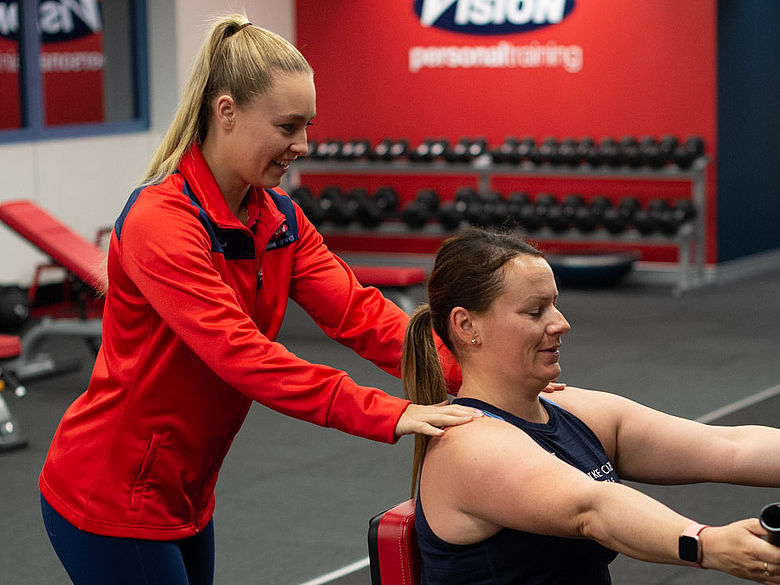Bouncing back from life in isolation.
So, you've made it out of COVID-19's isolation. Restaurants, cafés, and gyms have finally opened back up, BUT you recognise that some things in terms of fitness and health lifestyle have…steered off course.
Laziness, bad habits, complacency, lack of motivation, gaining an "iso-belly". Any of these ring a bell? Well don't you worry, because what has been developed in isolation through limitations to exercise and training, a depletion in motivation and overall a lack of freedom can be re-tweaked to drive you back on your path to fitness and health success.
How can this be done? First, we must address a few key principles to give clarity to your particular health goal:
- Self-acceptance
While through COVID, you may have gone off the rails slightly! This. Is. Normal. What is most important is that you do not beat yourself up about it and not allow guilt to mess with the start of your journey. This can be done by subverting your thinking from "I screwed up during isolation" to a more solution-based mindset like "What can I do to get out of this?" or "how can I change this to benefit my goals?"
This will put your mind in a positive headspace where you'll be exploding with ideas, getting excited for your journey.
- Reassessment
To follow a new path, we first need to outline WHAT that path is. This first step will give clarity to your health goal, allowing you to know exactly what you want to focus on post-isolation whether it's fat loss, maintenance, muscle gain or cardiovascular fitness. Your pre-isolation and post-isolation goal may not be the same due to the time of year you set it for, shift in priorities etc. So, it is important that even if your lifestyle may have been lightly or heavily impacted, that the new goal/s can be outlined to treat it as a 'new phase' in training.
- E.g., Pre-isolation Sarah wanted to focus on losing 15kg by June for her wedding, she started her journey in January so this would give her 5 months to work towards to her target goal. Although in post-isolation, this target has become much less ideal, where her wedding has been moved to December and has had gained a bit of extra weight due to lack of training and excessive eating, which allows herself to reassess and to set her up for a new target to aim for.
- Realistic
Next question you'll need to ask yourself is, is my goal attainable with the current circumstance I'm going through? With the changes in the world, individuals may have had to take on bigger priorities, such as family significances (home-schooling the kids) and new business and financial conditions (loss of income, working from home etc.) so your schedule may be fuller. Setting the bar too high can cause de-motivation, which overtime will make you want to simply give up on that goal. This is where it's vital that placing realistic views on your goal and whether it can be actually attainable, will help with a smooth transition back into nutrition and training, assisting in long-term success.
E.g. Pre-isolation Sarah used to train 2x a week in the studio/gym and did over 250 minutes of cardio weekly through running and cycling, while also weighing and tracking her food minimum 7 days a week. She would love to get back to that fitness routine again, but with the new changes of having to stay at home for work and supporting her family putting time constraints on her schedule, it is simply unrealistic for her to achieve this. She drops the bar down lower to walking 150 minutes and tracking a minimum 4 times per week, slowly easing back into routine.
- Reflection
Did you stress-eat more because of home-schooling? Boredom eating because your 10 metres away from the pantry? Are you not training at home because it's a place that you associate with luxury rather than a sweat house?
While it doesn't seem like it, isolation does place a silver lining that will help you grow and allow you to understand your current habits, which can be implemented into the future.
It's a "what was the lesson" mindset that lets you look back at what things may have negatively impacted your progress, recognising it, and moving forward by thinking of solutions on how to improve it, turning it into a positive lesson for the future. This makes you take control of a situation that (for the most part) was unfavourable, encouraging you to change those negative habits or emotions to realistic and positive outcomes.
e.g. Over the course of isolation, Sarah developed a bad habit of snacking in the afternoons while working from home due to stress. With her new goal set for post-isolation, Sarah has identified that this habit is destructive for long term-success, where she will now implement a 30-minute afternoon walk daily in the work week, reducing her stress while also helping with her cardio goal.
Happy goal smashing team.
Dan
*Disclaimer: Individual results vary based on agreed goals. Click here for details.

